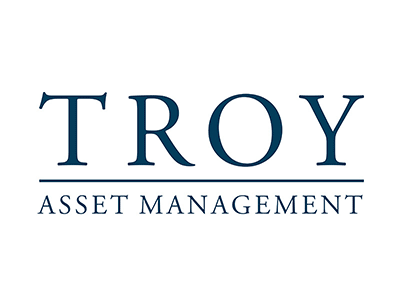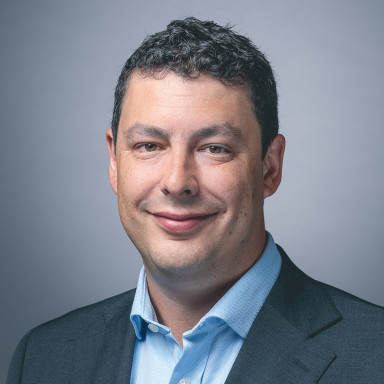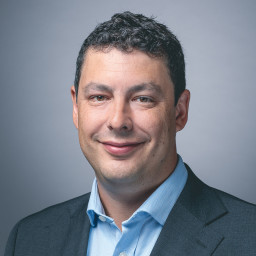- Lead manager Sebastian Lyon is part-owner of Troy Asset Management so we think he's incentivised to perform
- We like the simple philosophy behind this fund, with the potential for long-term growth and a focus on limiting losses in weaker markets
- The fund has outpaced inflation since it launched in May 2001
- This fund is on the Wealth Shortlist of funds chosen by our analysts for their long-term performance potential
How it fits in a portfolio
Troy Trojan aims to grow investors' money steadily over the long run, while limiting losses when markets fall, rather than trying to shoot the lights out and perform strongly at all times.
The fund tries to experience less ups and downs than the broader global stock market or a portfolio that's mainly invested in shares. As a result, it could form the foundation of a broad investment portfolio, bring some stability to a more adventurous portfolio, or provide some long-term growth potential to a more conservative portfolio.
Manager
Sebastian Lyon has managed this fund since its launch in 2001, using the same investment philosophy that was founded when Lyon helped to set up Troy Asset Management. He has also managed Personal Assets Trust since 2009 – this is an investment trust that is invested similarly to Troy Trojan.
Lyon is also CIO (Chief Investment Officer) of Troy Asset Management. This position takes up some of his time but he’s previously handed over some of the day-to-day company management responsibilities to capable colleagues. This leaves him to focus more of his time on investment management.
Lyon also has support from Charlotte Yonge, who was appointed as the fund's assistant manager in 2018 and carries out analysis across a range of assets. Sian Evans also joined the team in February 2022. She looks at companies across all sectors like the rest of the team but specialises in ESG (environment, social and governance) analysis. Overall, we think the team at Troy is strong, capable and stable.
Process
Lyon likes to keep things simple, a quality we like. He aims to shelter investors' wealth just as much as grow it.
To do this, the fund is constructed around four 'pillars'. The first contains large, established companies Lyon thinks can grow sustainably over the long run, and endure tough economic conditions. He’s tended to focus on companies based in developed markets, such as the UK and US. This includes some of the world's best-known companies with highly recognisable brands, such as Microsoft and Visa. Although the fund hasn’t had much exposure for several years, the manager has the freedom to invest in higher-risk smaller companies.
The manager reduced the amount invested in shares to around 25% in June 2022, due to concerns about persistent inflation and the potential for further market falls. The amount currently invested in shares is 22% and is the lowest proportion invested in shares within the fund since 2003. This reflects Lyon’s continued negative view of what could happen from here in stock markets.
This reduction was achieved with the complete sale of Medtronic, alongside reductions to position sizes in companies such as Alphabet, Microsoft and American Express. Medtronic was sold due to concerns around future growth of the company, which had not been as strong as expected following the world’s reopening after COVID-19.
The rest of the fund is made up of investments that could bring some stability to the portfolio during more difficult markets. The second pillar is made from bonds. 36% of the fund is currently invested in US index-linked bonds, which could shelter investors if inflation continues to climb. Over the past 12 months, the team has slightly increased the duration of the bond portion of the fund – this is a measure of a bond’s sensitivity to changes in interest rates.
The third pillar consists of gold-related investments, including physical gold, and accounts for 11% of the fund’s assets. Gold can act as a safe haven during times of uncertainty, or perform well when inflation rises or if key global currencies weaken.
The final pillar is cash and short-dated government bonds, where 31% of the fund is held. These investments provide important shelter when stock markets stumble.
While the fund contains a diverse range of investments, it’s concentrated. This approach means each investment can contribute significantly to overall returns, but it can increase risk.
Culture
We like that Troy's fund managers are dedicated to the same investment philosophy that was established two decades ago. The group has always been clear about the way its range of funds are managed, and the managers don't stray into overly complicated areas of investment markets. Wealth preservation is key, and each manager adheres to this mantra.
Lyon is a part-owner of Troy Asset Management, so we believe he's incentivised to perform, and for his funds and the business to do well over the long term. Other senior members of the group also own a part of the business, and we think this contributes to the stability and loyalty of the team.
While Troy is home to a small, close-knit team of investors, the group has recruited more junior members over the years to boost resource and ensure the funds are left in good hands as and when more senior members retire. Despite the team’s growth we think Troy has remained a very collegiate unit with all members able to have input.
ESG Integration
Troy Asset Management has been formally incorporating environmental, social and governance analysis (ESG) into its investment processes for a number of years, but it came from a strong starting point. It has always been focused on the sustainability of returns and the fund managers are long-term investors.
In recent years Troy’s investment team has formalised the way they incorporate ESG and the way they talk to investors about it. ESG is integrated using a materiality-based approach, meaning the managers focus on the issues they deem to be most material. They also have access to third party ESG research.
Hugo Ure is the firm’s Head of Responsible Investment, which he does alongside his role of fund manager. He recognised that for ESG integration to be successful, all the firm’s fund managers and analysts must understand the investment rationale for it. He feels the rationale is now well understood across the team. How analysts and fund managers engage with ESG, and the overall quality of their research, is considered when calculating their incentivisation packages.
Engagement and voting are the responsibility of the investment team. All votes are discharged, and usually cast in favour of management proposals unless the team believes investors’ interests are better represented by abstaining or voting against management. Their preferred course of action is to have dialogue with management ahead of casting a vote against. The firm publishes a summary of its ‘significant’ votes in its annual ‘Engagement and Voting Disclosure’ report, along with rationales for voting both in favour and against proposals. They also produce a quarterly Responsible Investment report, which includes voting and engagement statistics and case studies.
We believe ESG is comprehensively integrated in this fund, and that the ESG-related processes are robust. That said, this isn’t an exclusions-based or responsible investing fund, which means it can invest in any sector.
Cost
This fund has an ongoing annual charge of 0.86%, but we've secured HL clients an ongoing saving of 0.25%. This means you pay a net ongoing charge of 0.61%.
The fund discount is achieved through a loyalty bonus, which could be subject to tax if held outside of an ISA or SIPP. The HL platform fee of up to 0.45% per year also applies.
Performance
The fund aims to achieve growth ahead of inflation (as measured by the UK retail price index) over the long run, which it’s done successfully since it launched in May 2001. It’s also performed better than the broader UK stock market, which we think is impressive for a more conservative fund. Over this period, the fund has risen 326.71%* compared with 226.59% for the FTSE All-Share.
It's also achieved this with less volatility than the market. But remember past performance isn't a guide to future returns.
Avoiding large losses has been an important characteristic of the fund and it has tended to come into its own and hold up well in weaker markets, such as the bursting of the tech bubble in 2001-2002 and the global financial crisis in 2008. We saw this again in the first part of 2020 when global markets stumbled amid the coronavirus outbreak. The fund is not likely to keep up when share markets are performing strongly, but we expect this given its cautious approach. Importantly we expect it to provide some shelter when markets fall.
The fund lagged the broader UK stock market over the past 12 months, returning -1.30% compared with 6.04% for the FTSE All-Share. It also lagged inflation, with the Retail Price Index rising 9.74%.
In an environment where government bonds lost value and global shares didn’t provide much of a positive return, fund performance of -1.30% over the past 12 months is very much within expectations. While the UK stock market did better, much of these gains were from sectors or companies that Lyon would not invest in, such as oil & gas. Performance over the last 12 months highlights that the fund will go up and down in value, so you could get back less than you invest.
The largest detractor from performance for the fund were the investments in US index-linked bonds, due to the significant interest rate rises over the period. Positive contributors to performance came from gold related investments as well as short-dated UK gilts and US treasuries.
The shares held in the fund broadly held their value over the year overall. Unilever and Agilent Technologies added the most value, while Alphabet and American Express detracted.
| Annual percentage growth | |||||
|---|---|---|---|---|---|
| Apr 18 -
Apr 19 |
Apr 19 -
Apr 20 |
Apr 20 -
Apr 21 |
Apr 21 -
Apr 22 |
Apr 22 -
Apr 23 | |
| Troy Trojan | 5.09% | 8.76% | 8.52% | 8.13% | -1.30% |
| UK Retail Price Index | 3.04% | 1.53% | 2.90% | 11.13% | 9.74% |
| FTSE All-Share | 2.62% | -16.68% | 25.95% | 8.72% | 6.04% |
Past performance is not a guide to the future. Source: Lipper IM* to 30/04/2023.
Find out more about Troy Trojan including charges
Troy Trojan Key Investor Information


